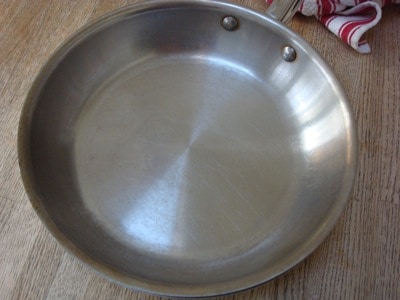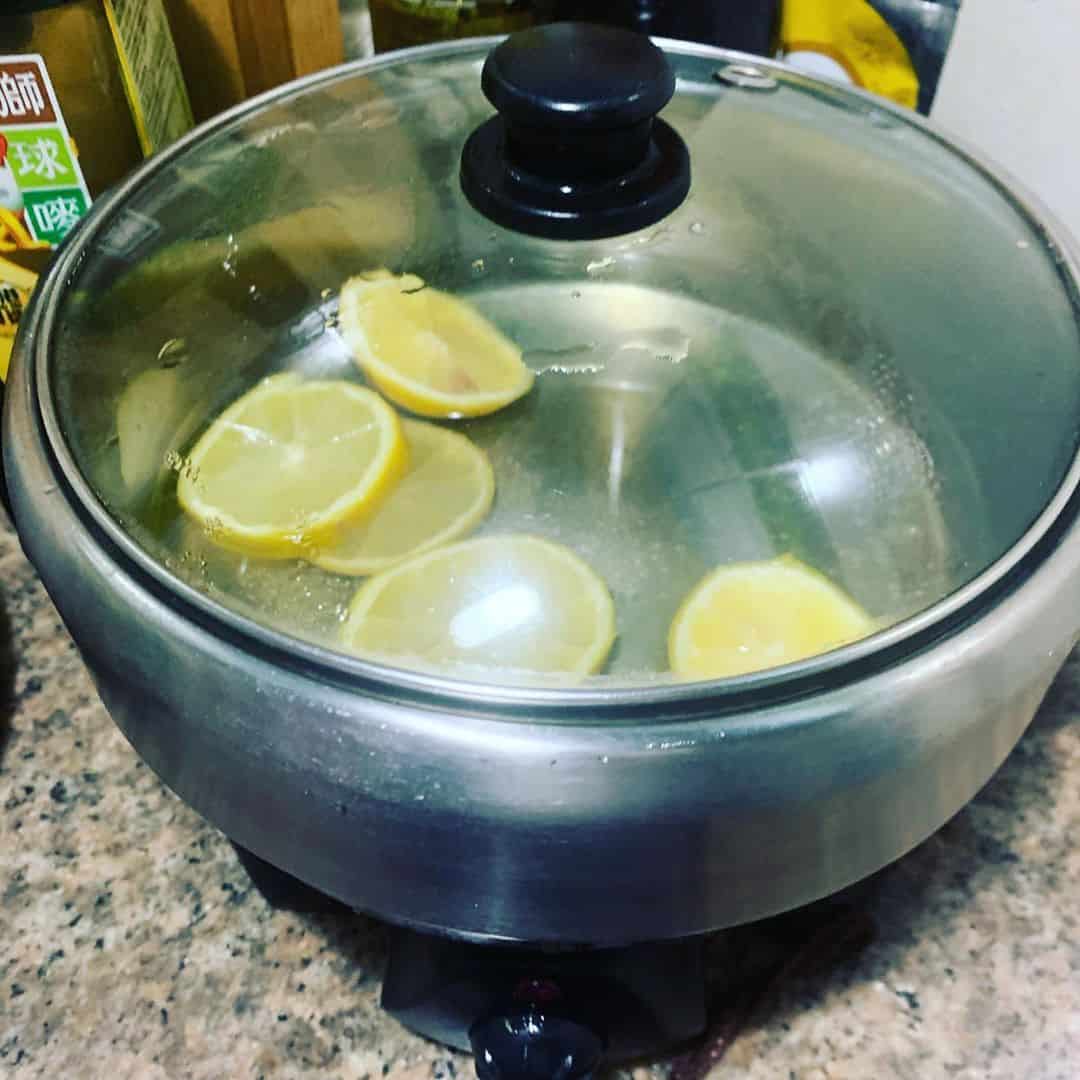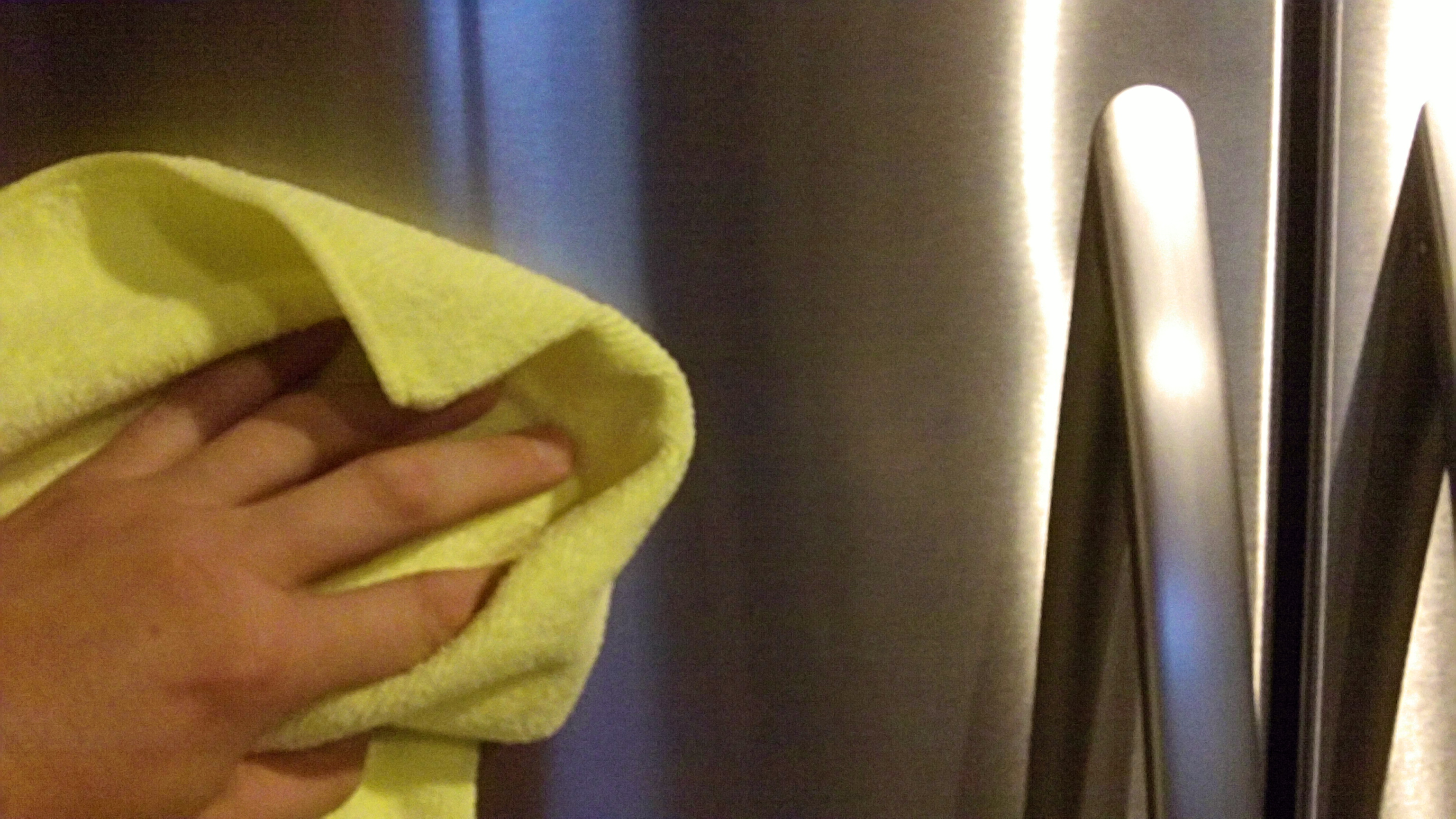

#CLEANING STAINLESS STEEL PANS HOW TO#
Work smarter, not harder, right? How To Keep Food From Sticking To Non-Toxic Cookware One of the best ways to ensure easy clean up after use is making sure you use the pan properly to keep food from sticking in the first place. However, as I was used to nonstick pans, I had to learn how to use and clean stainless steel cookware. That meant switching to cast iron and stainless steel for me. I used to use nonstick cookware years ago, until I learned the nonstick coating is actually toxic and unhealthy. This means from cooking to cleaning, your stainless steel pots and pans are a healthier choice for you and your family. However, the alternatives are Teflon (toxic nonstick coating) and enameled cookware ( high levels of lead and cadmium).Ĭleaning stainless steel cookware is easier than you may think! Plus, natural and non-toxic cleaners work well. They both have issues, namely leaching of heavy metals ( cast iron leaches iron, read more about here). In my opinion, stainless steel and cast iron cookware are still our best, most affordable options.

It’s hard to find truly non-toxic cookware. So, is stainless steel cookware really non-toxic and safe? An informed decision is always a safer one. If you are purchasing cookware from a country outside of the U.S., it would be best to research the specific manufacturing guidelines of that country. Imported cookware will be made from metals sourced, heated, and poured under different regulations. Where was your cookware made?Īs with anything else, it is best to check the country of origin of your cookware.
#CLEANING STAINLESS STEEL PANS SERIES#
It is also highest in nickel.Įven though the 400 series is said to be less durable, its small amount of nickel makes it the safest choice. The 300 series is the most common and considered the most durable. It corrodes easily, is not durable, and contains manganese which can be extremely toxic. When shopping for stainless steel cookware, try to avoid the 200 series. If you have a nickel allergy, you may need to avoid stainless steel entirely.

In general, nickel leaches in higher amounts than the other metals. Through normal wear and tear, the metals in stainless steel will leach into food ( source).Ĭooking acidic foods will cause the pot to leach higher amounts. With less nickel, these pots are more vulnerable to corrosion they are also magnetic.Ģ00 series stainless steel is considered low quality and made with manganese instead of nickel ( source). With a higher amount of nickel, the 300 series is more resistant to corrosion and rust.Ī pot stamped 18/0 is part of the 400 series. The grade of stainless steel identifies how corrosive it is.ġ8/8 and 18/10 indicate that the pot is part of the 300 series of stainless steel. These numbers specifically refer to the amount of chromium and nickel blended into the stainless steel.įor example, the numbers 18/10 show that the pot is comprised of 18% chromium and 10% nickel. Those numbers you see on the bottom of your pot refer to the grade of stainless steel. What are those numbers on the bottom of your pots and pans? If your pot is rusting or if there are signs that the core is wearing through, it is time to replace the pot because it’s probably leaching those metals into your food. The aluminum or copper core becomes an issue ONLY if the pot is scratched, grooved, or worn to expose it. Stainless steel does not conduct heat well, so cookware is usually made with an aluminum or copper core: essentially, a sheet of aluminum or copper sandwiched between layers of stainless steel to improve the pot’s heating ability. The combination of metals determines the grade of the stainless steel. Other metals can include nickel, manganese, aluminum, silicon, and sulfur. It always contains at least 10% chromium. Stainless steel is a low carbon, iron-based steel with other metals mixed in to reduce corrosion and increase strength.


 0 kommentar(er)
0 kommentar(er)
